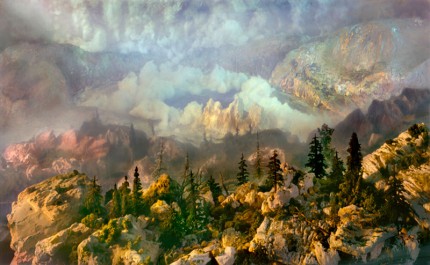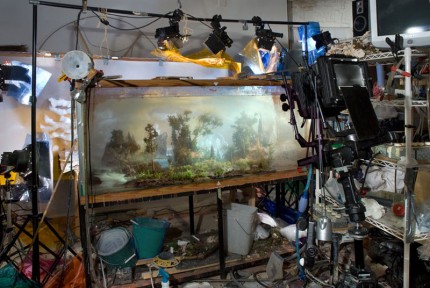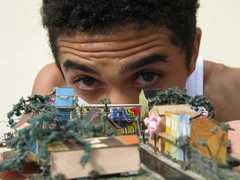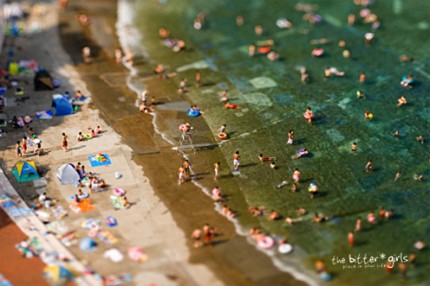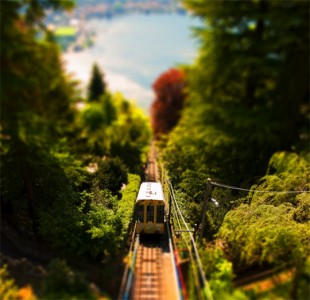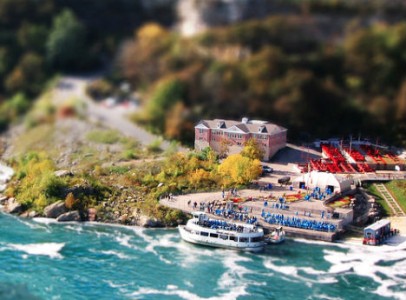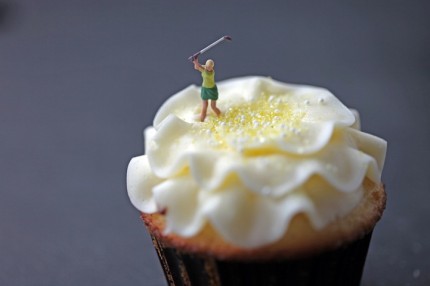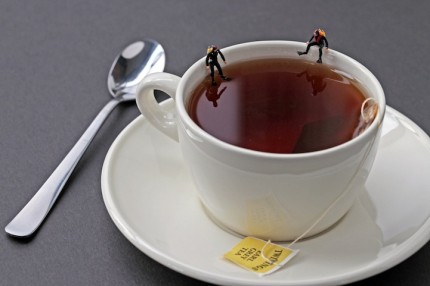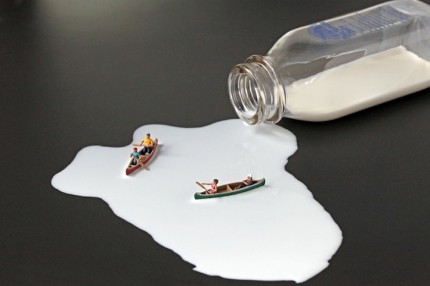Shrink It: Landscape Representation Techniques
Architecture models play a helpful role in communicating and expressing the designer’s vision, intentions, and implications. But outside of this profession, landscape modeling can be expressed very differently. I explored several artists’ takes of modeling or recreating the landscape at a miniature scale.
Kim Keever creates miniature staged landscapes inside a 200-gallon fish tank (. After his model is complete, Keever fills the tank with water and photographs the model, creating images that look like landscape paintings reminiscent of the works of Hudson River School artists. Keever’s model landscape photographs are meant to evoke a sense of timelessness and sense of imagination, as opposed to recreating natural landscapes.
Then there’s Daniel Kempton. Kempton creates crude mini cityscapes (mini – as in they’re so small they fit in the palm of your hand) from found objects like cardboard, tape, and foam peanuts. Kempton aims for his model landscapes to illustrating the connectedness between the natural and man-made worlds.
Another form of landscape modeling that isn’t modeling at all is faux-miniature landsca pe photography. Photographers use a technique called tilt-shift or miniature making to cause a life-size location to look like a modeled landscape in a photograph. These illusions work best when the photographer shoots from a high angle and increases the color saturation of her image.
Artist Christopher Boffoli creates some of the most interesting takes on modeling the landscape. Boffoli inserts tiny modeled people into full-scale food items that become his landscape. His modeling technique offers the audience a new way of seeing objects that we encounter every day, juxtaposing people and things. For example, his model people canoe around a puddle of spilled milk, mow a lawn of broccoli, or build a snowman atop a coconut cupcake.
From professional use to artistic expression, models can be effective tools to convey a design or evoke an emotion, and can be achieved using many different methods.

